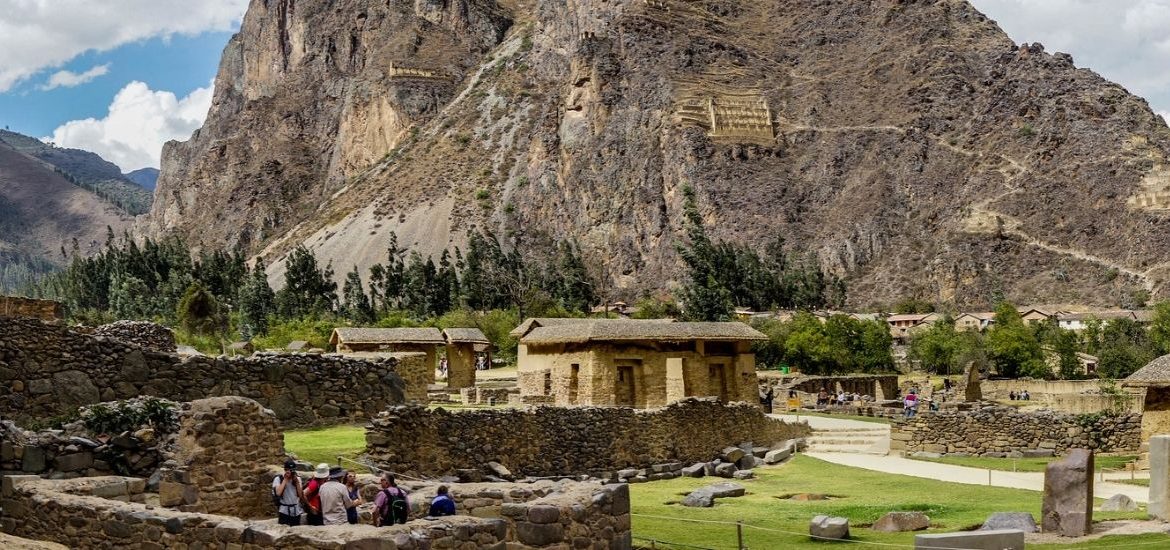As you may already know, Cusco is the most important travel destination in Peru, not only for housing one of the New Seven Wonders of the World but for its worldwide famous archeological sites, cultural expression and history. Therefore, if you’re planning a trip to the ancient land of the Incas, you should know everything about the Cusco Tourist Ticket.
There are several archeological remains spread across the entire Cusqueñan region and to visit them you must purchase an entrance ticket that could include up to 16 attractions depending on how long you stay and the archeological circuit you’d like to visit.
Either you’re planning a long stay or just a 24-hour trip in Cusco, visiting any of the surrounding Inca ruins is a must. However, the entrance tickets to these archeological sites are not sold separately, which is why we’ve come up with this section to teach you about the different tourist attractions included in each ticket.
As you make your way through the Imperial City of Cusco, you’ll see how worthy it is to take some time to explore everything this historical city has to offer and here we are to tell you everything about it!
What is the Cusco Tourist Ticket?
As we mentioned above, it is a one-time purchased ticket that allows you to visit several historical monuments within a specific circuit.
The Boleto Turístico de Cusco (BTC) is issued by the COSITUC institution, which is in charge of the recollection, administration and distribution of the royalties obtained from these tickets.
When purchasing any Cusco tourist ticket, you contribute to the management and preservation of such sites. These grouped entrance fees will be available for a determined time according to the circuit you choose.
There are three touristic circuits and each of them has a Partial Cusco Tourist Ticket, though you could also get the General Tourist Ticket in case you’re planning on visiting several sites during your stay. To help you make the right decision, below we have broken down all the information regarding each circuit so you can easily plan your trip through Cusco.
Circuit I | Cusco Archeological City Tour
For those planning a short stay in Cusco but still want to see the impressive archeological sites around the city, this would be the most suitable option. The Circuit I Tourist Ticket includes the Inca ruins of Sacsayhuaman, Q’enqo, Puka Pukara and Tambomachay.
These ancient structures are included in the traditional Cusco Archeological City Tour, which allows you to know the most important pre-columbian buildings within the city. Here’s some information about these famous sites:

Sacsayhuaman
The impressive megalithic structure of Sacsayhuaman is located in the outskirts of Cusco. It is considered one of the perfect engineering works of the Inca civilization. However, most of its structure was destroyed during the construction of the colonial Cusco, but only the heaviest and largest stones remained.
According to historians, it took 50 years and around 20,000 men to build the enigmatic complex. Some of the remaining stones can reach up to 9 meters of height and weigh over 125 tons.

Q’enqo
It is located three kilometers away from Cusco and it’s one of the largest Huacas found in the region. The archeological site was a sacred location and is believed to have been a place where the Incas performed sacrifices and mummifications in honor of the Sun God Inti.
The Q’enqo Ceremonial Center comprises large carved rocks forming a cave shape, its interior is decorated with three representative figures of the Andean cosmology: The condor, the cougar, and the snake.
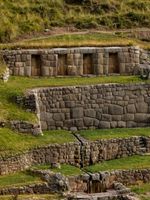
Tambomachay
This monument is considered to be a water cult center composed of several aqueducts, canals, and waterfalls. Etymologically, Tambomachay means ‘Resting Place’ in Quechua, which gives us a hint to its secondary purpose as a resting point for the Inca elite.
The archeological site is recognized for its authentic architecture and engineering since its four walls fit perfectly to the base, which is held by three parallel terraces. The pool-shaped water fountain found in this structure is called ‘The Ñusta Bath’ since it is similar to the ones found in Ollantaytambo.

Puca Pucara
This famous Inca structure sits on the edge of a mountain. Although its purpose was mainly military, it also served as an administrative center. Puca Pucara means Red Fortress in Quechua, a name given due to the red coloration of the stones found in its structure.
The place comprises four ambiences, where two walls support the terraces that surround it. Due to its importance during the Inca era and its strategic location, Puca Pucara was designated as Cusco’s Cultural Heritage by the National Institute of Culture.
Simply put, the Circuit I Tourist Ticket includes 4 archeological sites that you can visit on a city tour through Cusco and it’s valid for 1 day upon purchase.
Circuit II | South Valley Tour & Cusco Museums
In case you’re interested in knowing much more about our history and culture as well as exploring other archeological sites around the area, we recommend purchasing this special circuit which includes 4 museums in Cusco, a night cultural show and two archeological sites.
For example, the South Valley Tour is a new alternative for those looking to experience another side of our pre-columbian and colonial heritage since it will take you on an expedition to the Pikillacta and Tipon archeological sites and other attractions. Here’s what you should know:

Tipon
It is one of the perfect examples of the hydraulic engineering knowledge of the Incas, where most of its aqueducts and water fountains have kept functioning perfectly. Unfortunately, there are no official records that can confirm the real purpose of this construction nor its original name.
The archeological site consists of wide agricultural terraces irrigated by a network of water channels fed by a natural spring and it covers an extension of 239 hectares. The Tipon Archeological Complex is also part of the Qhapaq Ñan, a trail network commonly known as the Inca Trail, which connected the whole Inca Empire.
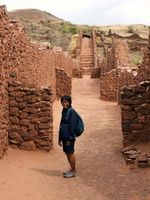
Pikillacta
The Pikillacta Archeological Site was built between the VI and IX centuries, just at the peak of the Wari culture. The first archeologists in studying the complex thought that the structure belonged to the Incas, however, the elements used in the construction weren’t typical of this civilization and its architectural style is linked to the Wari culture.
The complex is one of the largest pre-Inca places within the Cusco region since it has an extension of 50 ha. Likewise, the Pikillacta citadel is composed of 700 buildings, 200 courts, 508 storages or colcas and many other buildings.
According to the other attractions included in this ticket, here’s a list so you can organize your itinerary according to your interests:
- Museo Histórico Regional
- Museo de Arte Contemporáneo
- Centro Qosqo de Arte Nativo
- Museo de Arte Popular
- Museo de Sitio Qorikancha
- Pachacuteq Monument
As you can see, the Circuit II Tourist Ticket includes 8 attractions and it is valid for 2 consecutive days upon purchase.
Circuit III | Sacred Valley of the Incas Tour
Almost every traveler visiting Machu Picchu passes by the Sacred Valley of the Incas first, this beautiful region captivates everyone with its awe-inspiring natural scenery and exceptionally preserved archeological sites.
Actually, the Sacred Valley of the Incas Tour is one of the most sought-after things to do in Cusco since it allows you to understand and learn much more about the Inca civilization and ancient way of living, while also letting you get fully immersed in the authentic andean culture and mysticism.
If planning a trip to Cusco this is one of the unmissable day trips you should take. Here’s some information about the archeological sites included in this ticket:
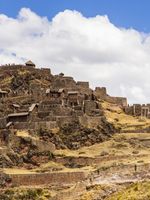
Pisac Archeological Site
It served as a control and religious center during the Inca era. However, the real purpose of the structure is still unknown, according to some historians it was the Inca Pachacutec’s royal hacienda with administrative, ceremonial, and agricultural areas, but this theory remains uncertain.
The Archeological Site of Pisac is located at 3,300 meters above sea level, offering incredible views of its surroundings and the Sacred Valley.
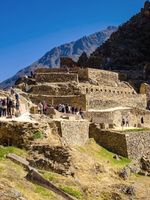
Ollantaytambo Archeological Site
The ancient structure is located in the heart of the town, it served as a ceremonial fortress with terraces for agricultural exploitation and experiments, as it was in Moray.
The Ollantaytambo Archeological Site is recognized as the only place that defeated the Spanish army during colonization for almost 50 years.
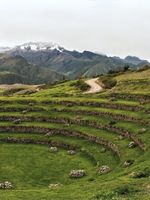
Moray Archeological Site
The Archeological Site of Moray comprehends several circular terraces built up in a way to optimize the cultivation of plant species thanks to the different microclimates generated by its composition.
It is believed that over 250 plants and vegetable species were cultivated in these platforms, which is why archeologists point it out as an “agricultural laboratory center.”
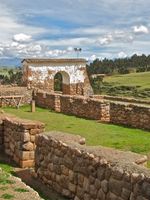
Chinchero Archeological Site
This Inca site was the designated residence of Tupac Yupanqui. Here he ordered the construction of beautiful palaces though it was later incinerated by Manco Inca to help people escape during colonization to the hidden lands of the jungle.
Nowadays, only a few parts of Chinchero have remained, being the most preserved construction, the one used as the foundation of a Church that dates back to the XVI century.
In conclusion, the Circuit III Tourist Ticket includes 4 important archeological sites and it’s valid for 2 consecutive days upon purchase.
General Cusco Tourist Ticket
As we mentioned early on this blog, this would be the most suitable option for those who have a longer itinerary in Cusco and wish to see several sights around the region. The General Cusco Tourist Ticket is valid for 10 days and includes all the aforementioned 16 attractions.
Unlike most travel agencies, we do include this ticket in all our travel packages, regardless of how short the itinerary might be. That way, you can have more options to visit during your spare time in Cusco.
It is worth mentioning that none of the Cusco Tourist Tickets can’t be purchased online. It must be done at the Cusco Tourist Information Center, located in Calle Mantas 116, Cusco; or in the Cusco Boleto Turistico Main Office in Av. El Sol 185, Cusco.
Nonetheless, the Boleto Turístico de Cusco is available for purchase at 14 of the 16 aforementioned sites. Excluding the Museo de Arte Contemporáneo and the Pachacuteq Monument.
We’d love to show you everything about the ancient land of the Incas, which is why we have prepared a special Cusco travel guide so you can get to know about the best things to do there. Likewise, here’s another blog if you’re looking for more information about the best things to do in Cusco city.

